2024 Ford Mustang Dark Horse Review: Proven ingredients, new recipe
There’s a newcomer to the Mustang stable. The Dark Horse now represents the top spec for the model’s new, seventh generation. It’s also the first new name for a Mustang performance trim since the Bullitt in 2001. Of course, that nomenclature was a McQueen nostalgia play tapping into prior glory—a strategy essential to the retro-fueled pony car since 2005, which both the fifth-gen Boss 302 and the recent sixth-gen Mach 1 employed to great effect. The Dark Horse, though similar in concept to these predecessors, is all about looking ahead.
Without explicit heritage to call upon, the Dark Horse will instead draw credibility from racing. Though Mustangs have long been a familiar sight at tracks in the U.S. and occasionally abroad, Ford is stepping up its presence with new GT3 and GT4 variants of the Mustang Dark Horse for international endurance racing. To further drive home the point—that the Mustang is much more than a pony car—a racing-only Dark Horse R will be the focus of a new IMSA-sanctioned Mustang Challenge spec series.
What does that mean for the road-going Dark Horse you can actually buy? As with the outgoing Mach 1, the Dark Horse is both an aspirational step beyond a fully kitted GT as well as an incrementally more performance-oriented, track-capable tool.

Incremental is the key word here—the Dark Horse is not a wholly different beast from the GT, but rather the result of many small tweaks that amplify the traits of an already excellent sports car. And, as with the Mach 1, the Dark Horse doesn’t sacrifice road manners for outright track prowess.
Ford provided a good setting for us to explore the Dark Horse’s personality, with ample laps on the Charlotte Motor Speedway roval (a blend of road course and oval) as well as time on public roads winding through rural North Carolina. Our track sessions included time in manual-transmission cars with and without the Handling Package ($4995). Luck of the draw gave us a base Dark Horse, with $1650 optional Recaro seats, for road duty.
Specs: 2024 Ford Mustang Dark Horse
Price: $60,865
Powertrain: 5.0-liter V-8; 6-speed manual or 10-speed automatic
Horsepower: 500
Torque: 418 lb-ft
Layout: Rear-drive, two-door, four-passenger coupe
EPA-rated fuel economy: 14–15 mpg city / 23–24 mpg highway
0–60 mph: sub-4 sec (est.)
Competitors: Toyota GR Supra, BMW M2, Chevrolet Camaro SS 1LE (soon to be gone)
We’ve covered the EcoBoost and GT trims in the cavalcade of Mustang coverage over the last couple of weeks, which has underscored the deluge of options and configurations across all three levels. At the top of the heap is the Dark Horse, starting at $60,865 including a $1595 destination fee. Tick all the boxes and you can cross $75K. What do you get for all that?
Hop inside a Dark Horse and the differences from the GT are subtle. There’s a numbered plaque ahead of the passenger, a unique screen start sequence, darker trim surfaces, and stitching differences. The Dark Horse Appearance Package ($1500) adds attractive Deep Indigo blue leather. Your choice of seats boils down to relaxed or aggressive: the base models are more adjustable and have welcomed lumbar support and optional ventilation. They don’t hold you laterally, though, which is where the Recaros come in. They’re great for track work and were comfortable over a couple-hour journey but could use more adjustment and lumbar support.
The most noticeable change to the Mustang’s interior is the screen-dominated dashboard. The giant flat surface will remain jarring for many, but its configurability provides excellent vehicle information at a glance. In Track mode, the digital tach’s redline is centered for easy visibility, and the second screen can meanwhile display a whole suite of gauges—it’s clear the performance team got to crash the tech party, and we consider that a win, of sorts.

Ford’s decision to put technology at the forefront of this interior highlights a pivotal design decision—to move away from explicit call-outs to the 1960s Mustang. No chrome surrounds, no retro surfaces or shapes. Arguably, the last Mustang interior that didn’t reach back to the first-gen cars was the Fox-body Mustang, which ended production in 1993. The only vintage references in the latest-generation Mustang are the selectable Fox-body gauges, complete with illuminated green instruments like Gen X experienced all through the 1980s and ’90s. Time marches on, and once again, so does the Mustang.
Some things have not changed. Pulling out from the pits onto the banked oval immediately revealed the star of this package: the 500-horsepower Coyote V-8/Tremec TR-3160 combination, which deserves a spot in the Sensory Joy Hall of Fame. All snarl and bass, the Coyote rips to its 7500-rpm redline, rolling into its refrain again and again with each subsequent shift. Each short throw of the blue titanium shift ball requires considerable effort, rewarding you when the lever snaps into position with satisfying authority. Movement between the gates is precise and mechanical-feeling. Like any quality tool, good feedback makes the job easier, but also more enjoyable. The same can’t be said of the GT’s Getrag MT-82, whose linkage is comparatively imprecise.

Those 500 horses—14 more than an active exhaust-equipped GT (torque remains the same at 418 lb-ft) are courtesy of some classic hot-rodding. The Dark Horse gets a balanced crankshaft, hardened camshafts, forged connecting rods from the outgoing GT500, and a revised tune, all of which should aid in durability through extended periods of high-rpm tomfoolery. To further help keep the Dark Horse composed, Ford added coolers for the engine, transmission, and differential. They came in handy—temperatures on track at Charlotte cracked 100 degrees by midday, and none of the Dark Horses broke a sweat.
Opting for the $1595 ten-speed automatic provides slightly shorter gear ratios than in the automatic-equipped GT (the Tremec’s are shorter than the Getrag’s as well). The automatic gets a 3.55:1 Torsen limited-slip differential, while the manual gets a 3.73:1 Torsen. Ford didn’t issue hard numbers on acceleration, but expect a zero-to-60 sprint in under four seconds.
Heel-toe is easy with the well-spaced pedals (or you can let the Dark Horse rev match for you), and we couldn’t help but grin at the Coyote’s sharp barks on downshifts. The same six-piston Brembos up front and four-piston calipers in the rear from the GT’s Performance Package are standard here, and with the help of electronic boost they have no problem peeling nearly 100 mph off the 3949-pound Dark Horse’s speed into a tight hairpin at the end of Charlotte’s back straight. Initial brake bite is not excessively grabby, and the pedal feels consistently firm.
Turn-in isn’t over-eager, even with the Handling Package’s grippy 180-treadwear 305-section front Pirelli Trofeo RS tires and adjustable camber plates borrowed from the outgoing GT500. The Dark Horse instead hews old-school, encouraging trail braking on corner entry to help position the nose, while adjusting throttle facilitates line corrections throughout the corner.

This is a willing, communicative chassis that most drivers will not find hairy or intimidating. Steering weight is a bit firmer than in the GT yet overall still lighter than in BMW M or GM performance cars. That’s a stylistic difference rather than a shortcoming, but we nonetheless wish for a bit more directness and response; changes in front end grip whether on track or street can be a bit muted through the steering wheel. That’s really our only quibble.
If you plan on doing any track time at all, the Handling Package is worth the five grand. It adds an aggressive front splitter and rear spoiler, stiffer springs, retuned MagneRide dampers, a solid 24mm rear sway bar instead of a hollow one, and the aforementioned Pirelli Trofeo RSs (305 section up front and enormous 315s in the rear, shod on wider wheels). You’d be hard-pressed to spend less than that on aftermarket parts to bring the base Dark Horse or a Performance Package GT up to the top Dark Horse’s level, much less finding a formula that’s as dynamically balanced as what Ford’s engineers have developed.

Plenty of Dark Horse owners will never see time on a road course, and these customers should not overlook the base car. It delivers during assertive street driving and enjoyable cruising, wearing the same Pirelli P Zeros that come on Performance Pack GTs, plus Ford’s supple yet superbly-controlled MagneRide dampers with a unique tune. Like any Mustang these days, the Dark Horse can be as docile or devilish as your right foot demands. The car’s consistent balance across this wide performance threshold is what impresses us most.
Ford’s pony car may have prioritized heritage for the last couple of decades, but it’s always been an aspirational choice. In that respect, the Dark Horse is not as much of a pivot as it may appear. Like the Mach 1 before it, this car is hard-wired for the heart more than the head. Big performance, big street presence, and big, impressive name. That those same ingredients have been spun into a fresh recipe should please Mustang fans old and new. And for the most dedicated traditionalists, we have to believe a Shelby version will be added to the menu soon.
2024 Ford Mustang Dark Horse
Highs: Rewarding to drive in any context—winding road, open boulevard, or closed circuit. Thunderous sound and tactile feedback that is becoming increasingly rare.
Lows: Could use a touch more front-end grip. Base seats would be perfect with more lateral support.
Takeaway: A high-performance, high-emotion Mustang for generations both present and future.
***
Check out the Hagerty Media homepage so you don’t miss a single story, or better yet, bookmark it. To get our best stories delivered right to your inbox, subscribe to our newsletters.
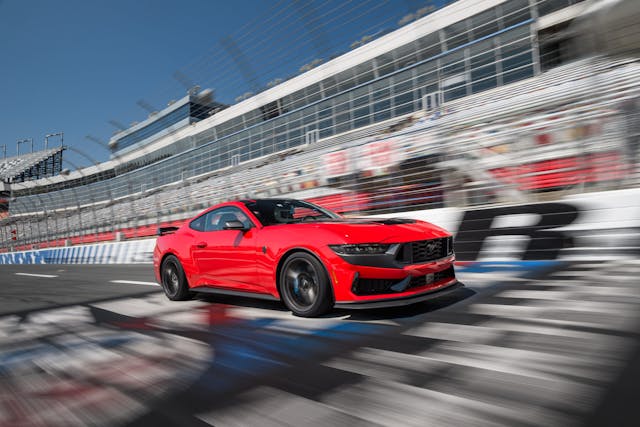
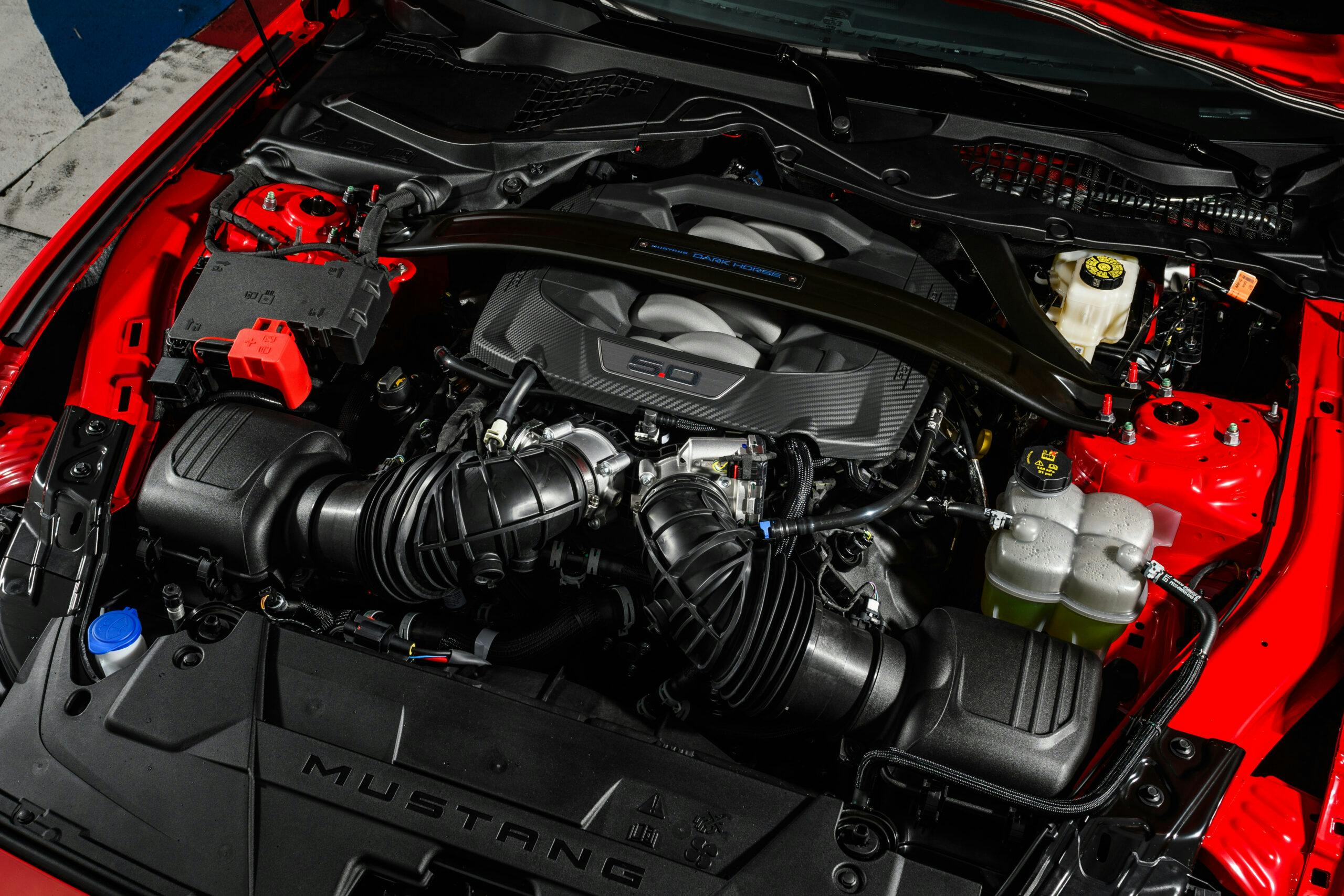

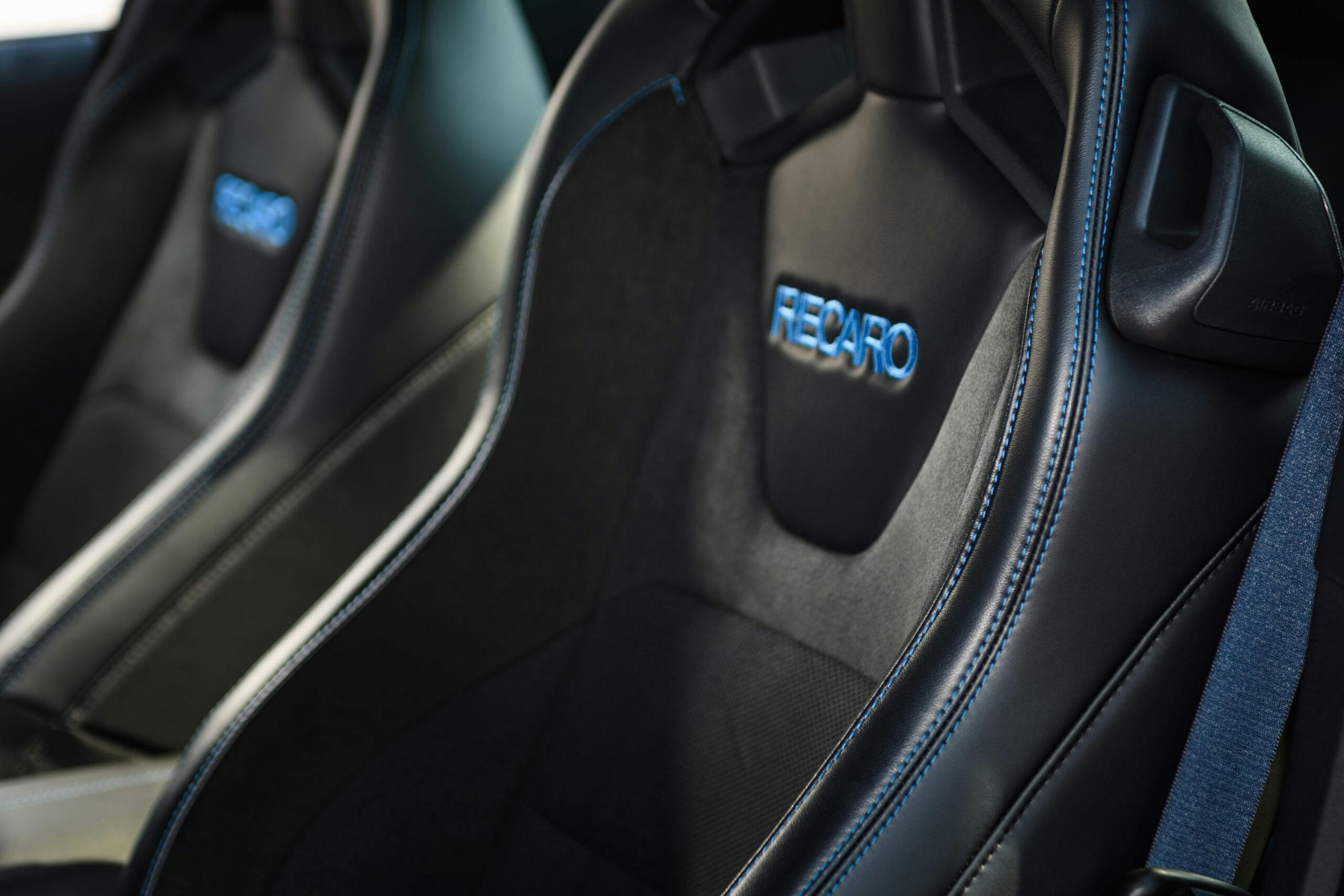

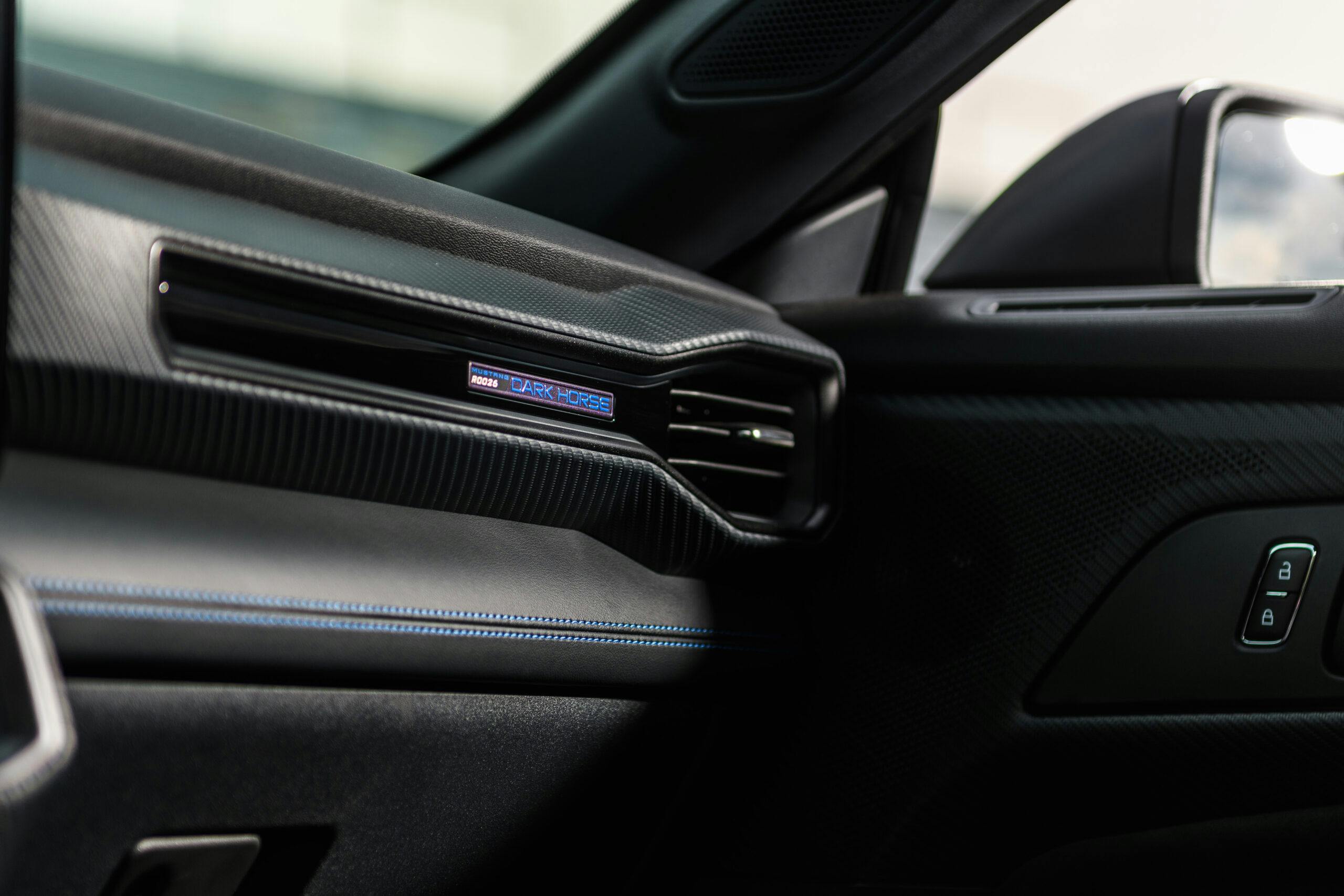
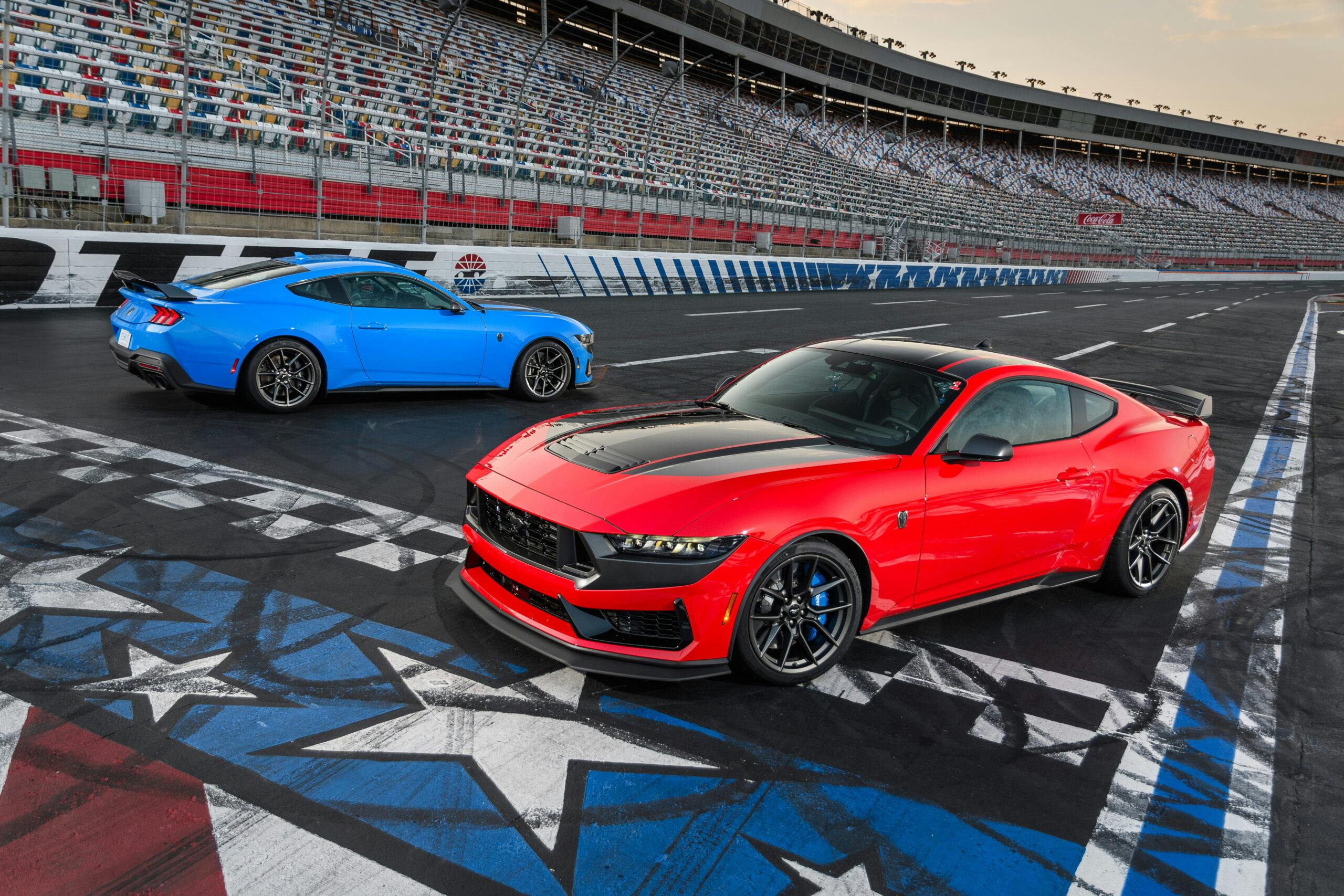

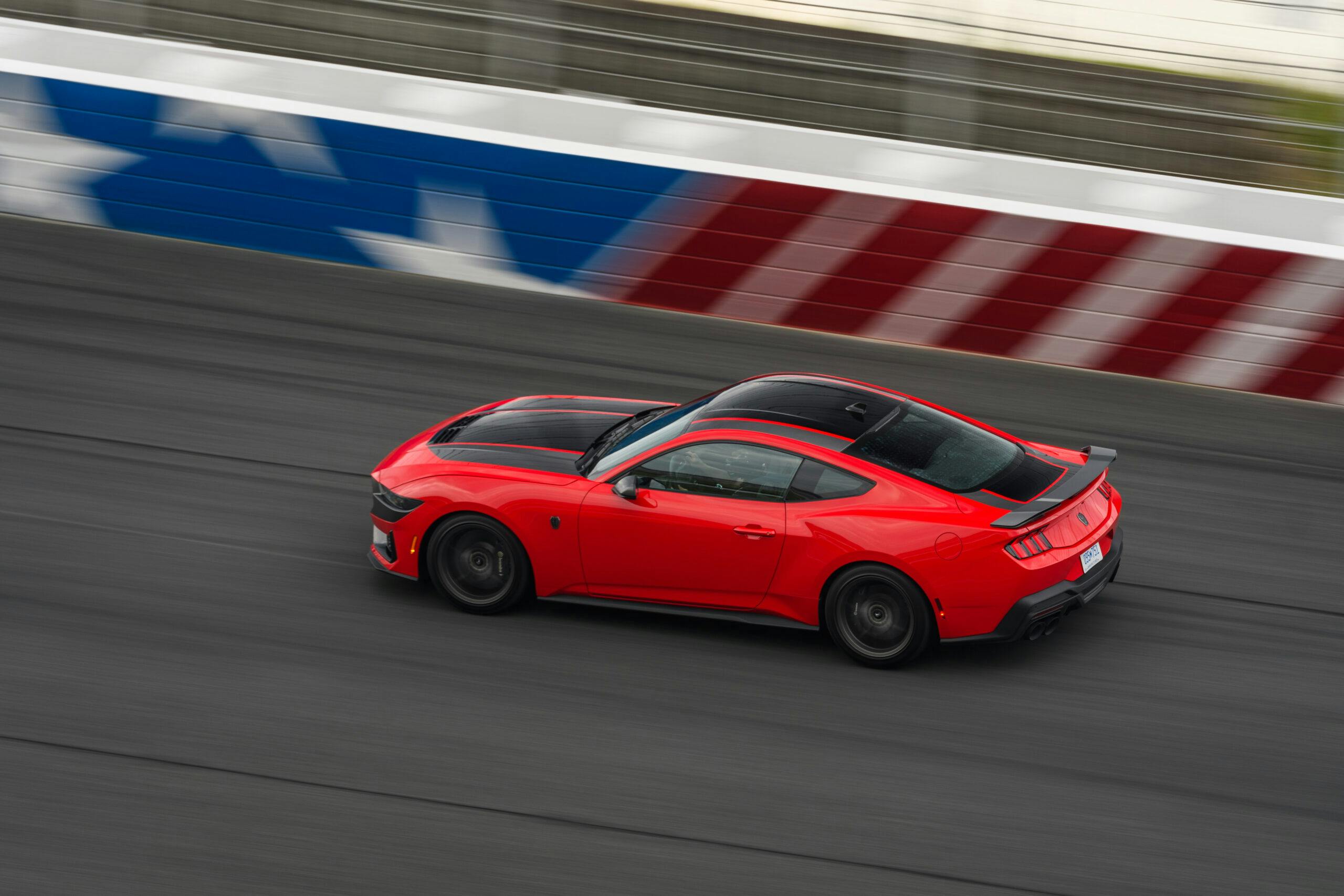
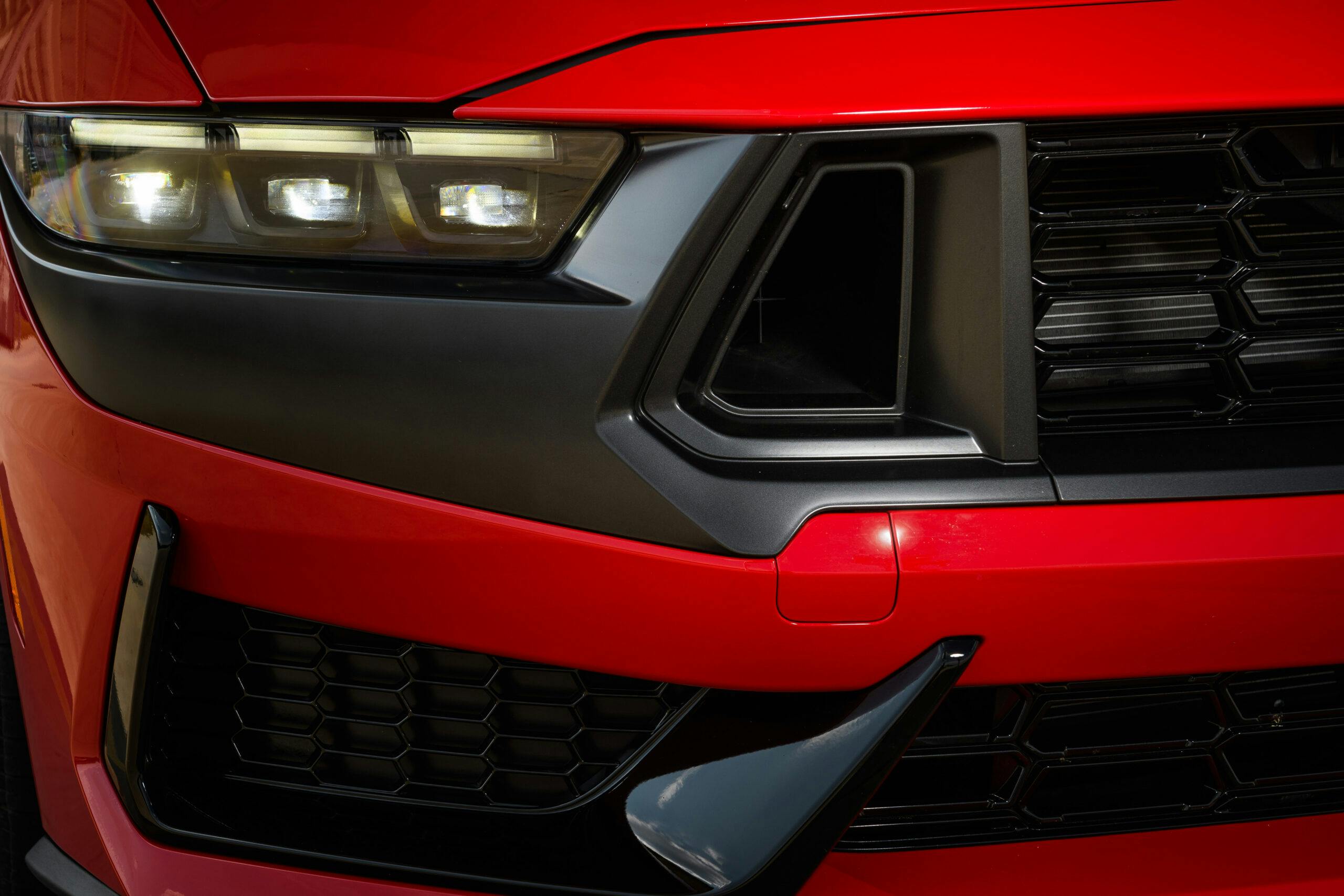

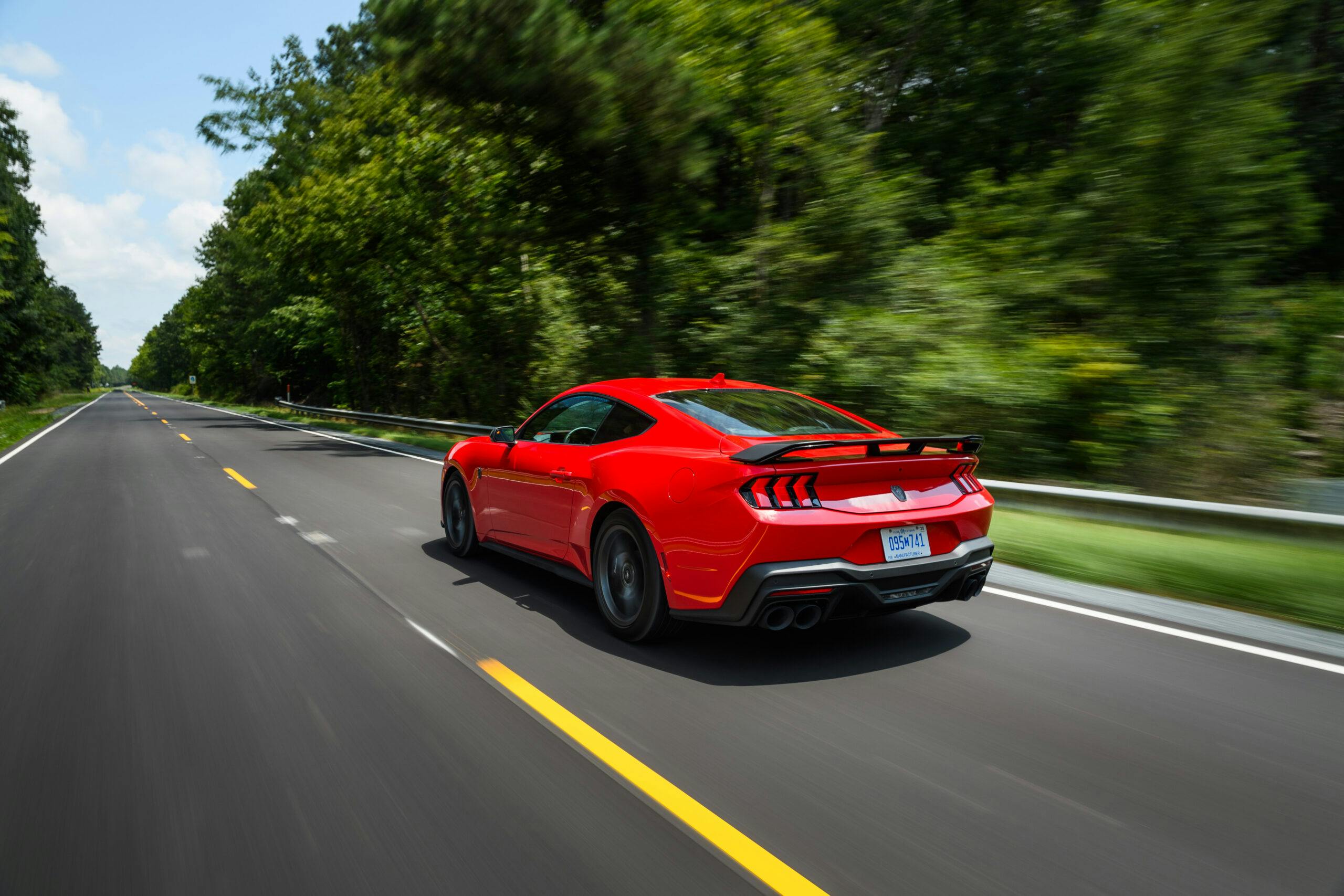
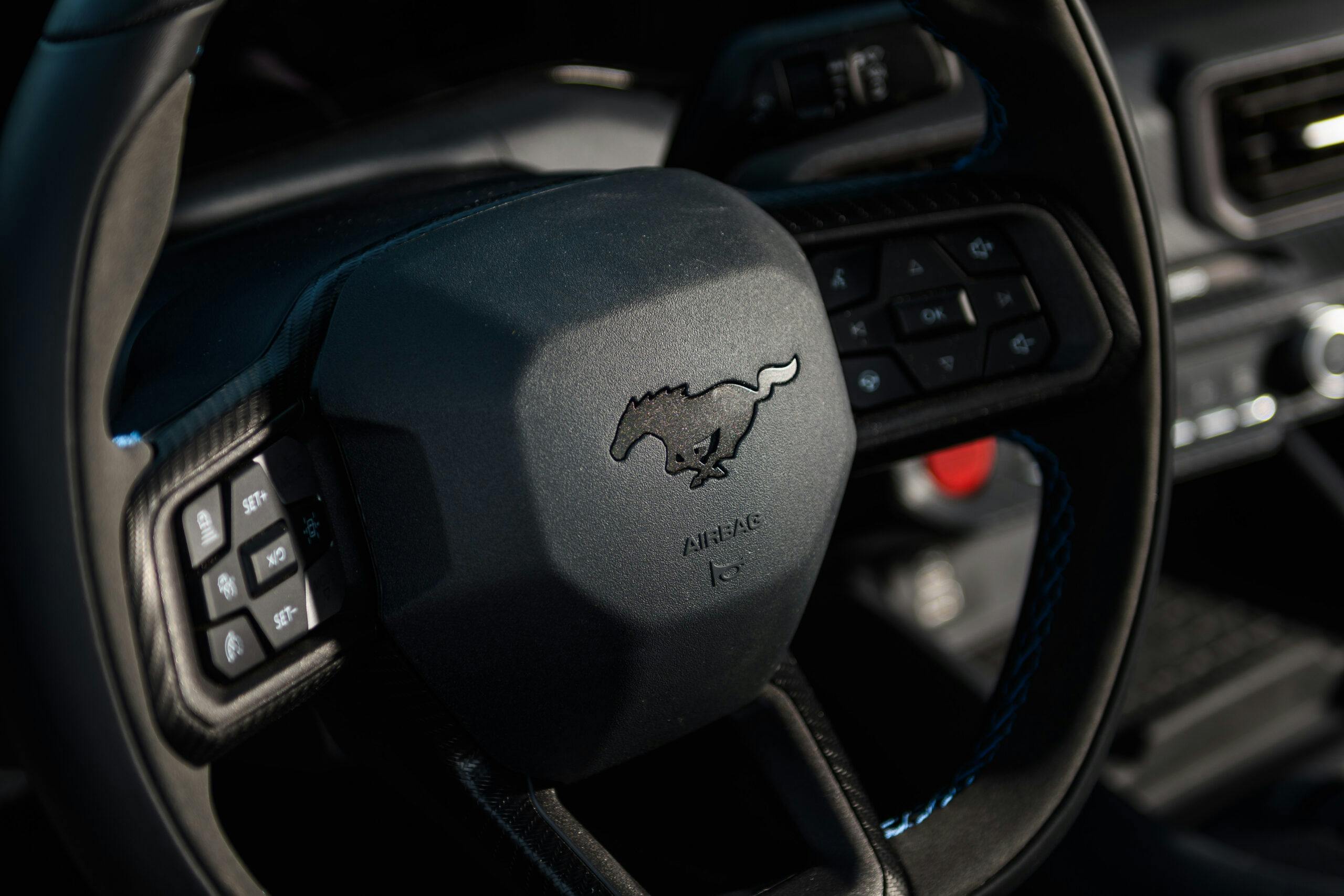

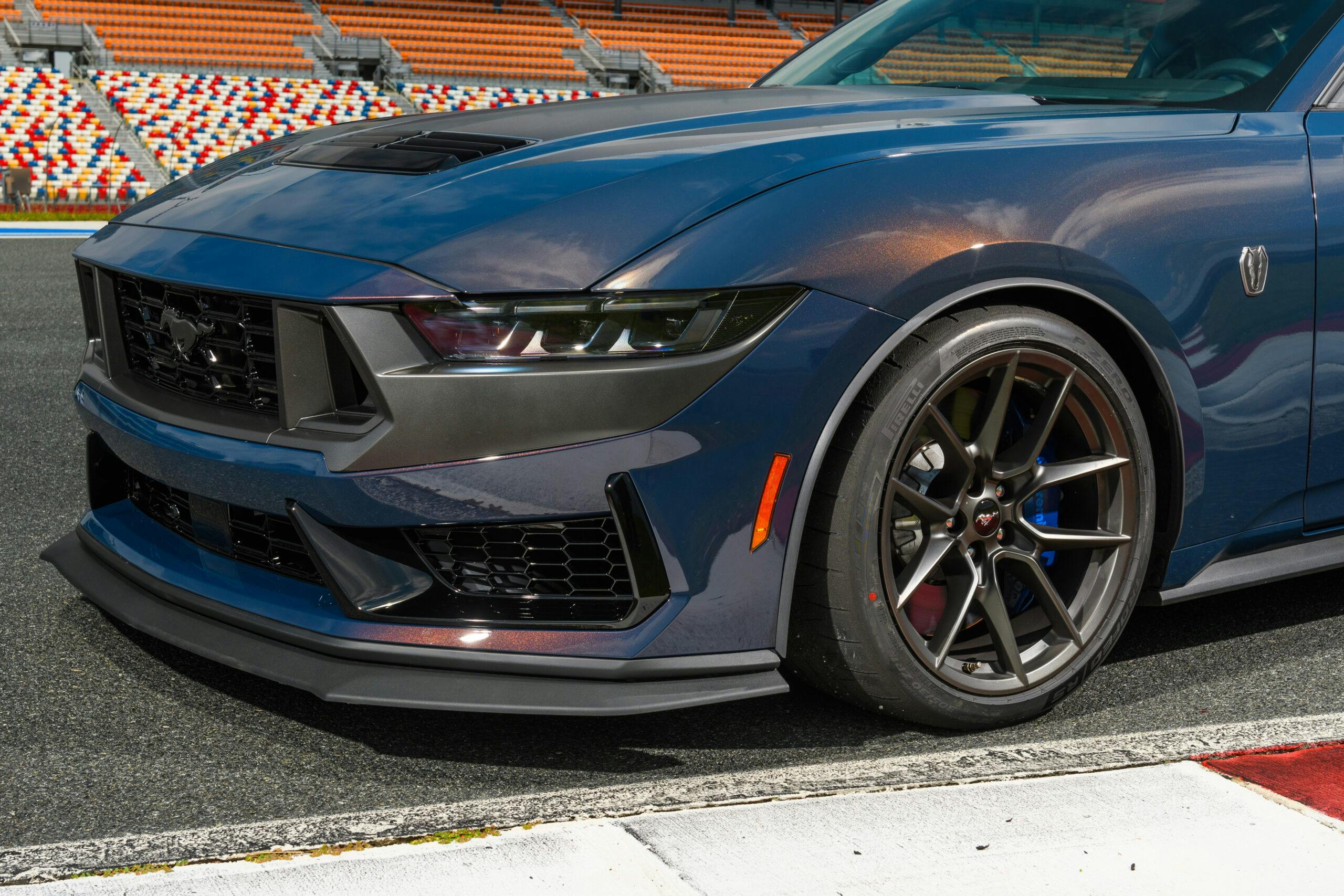
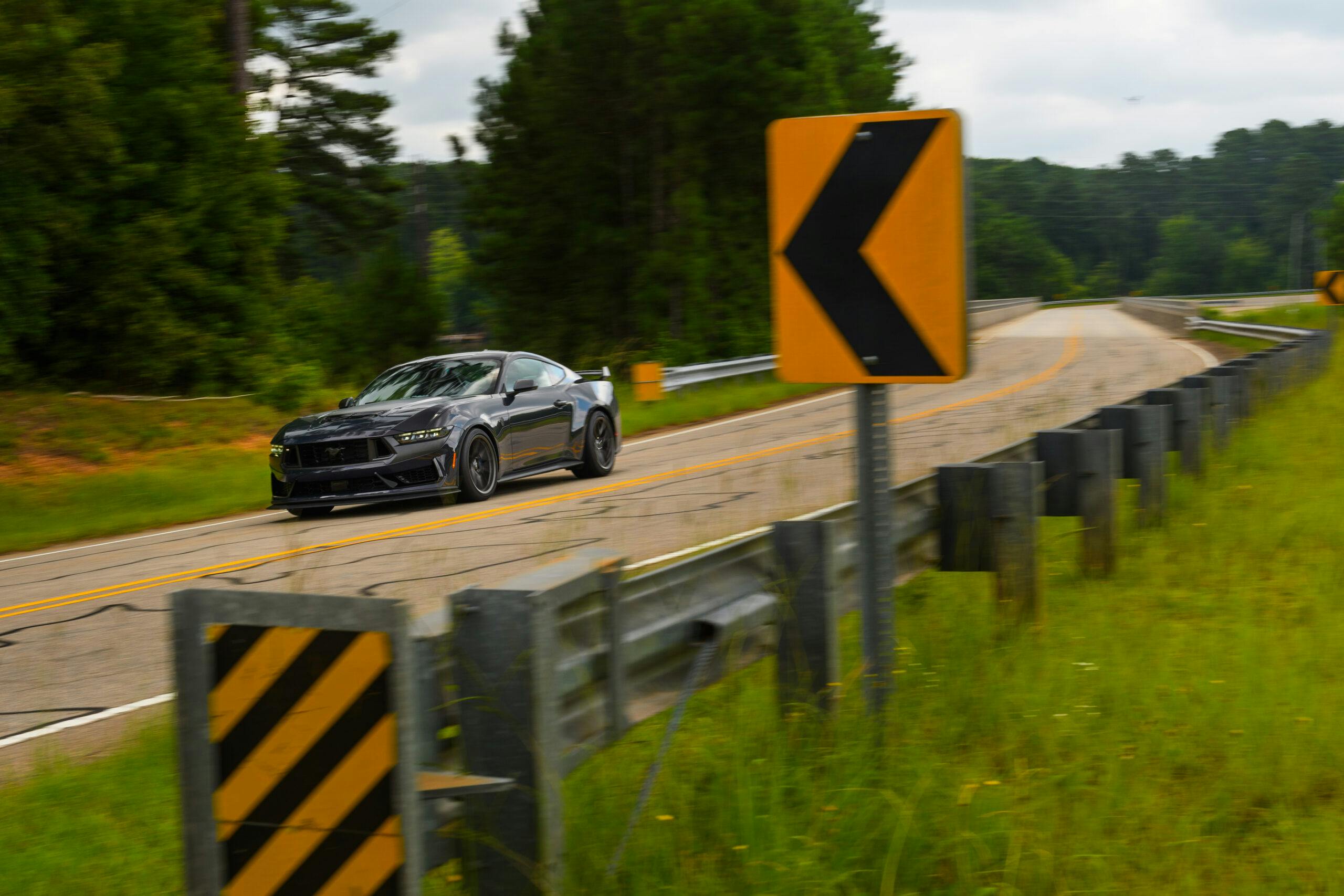
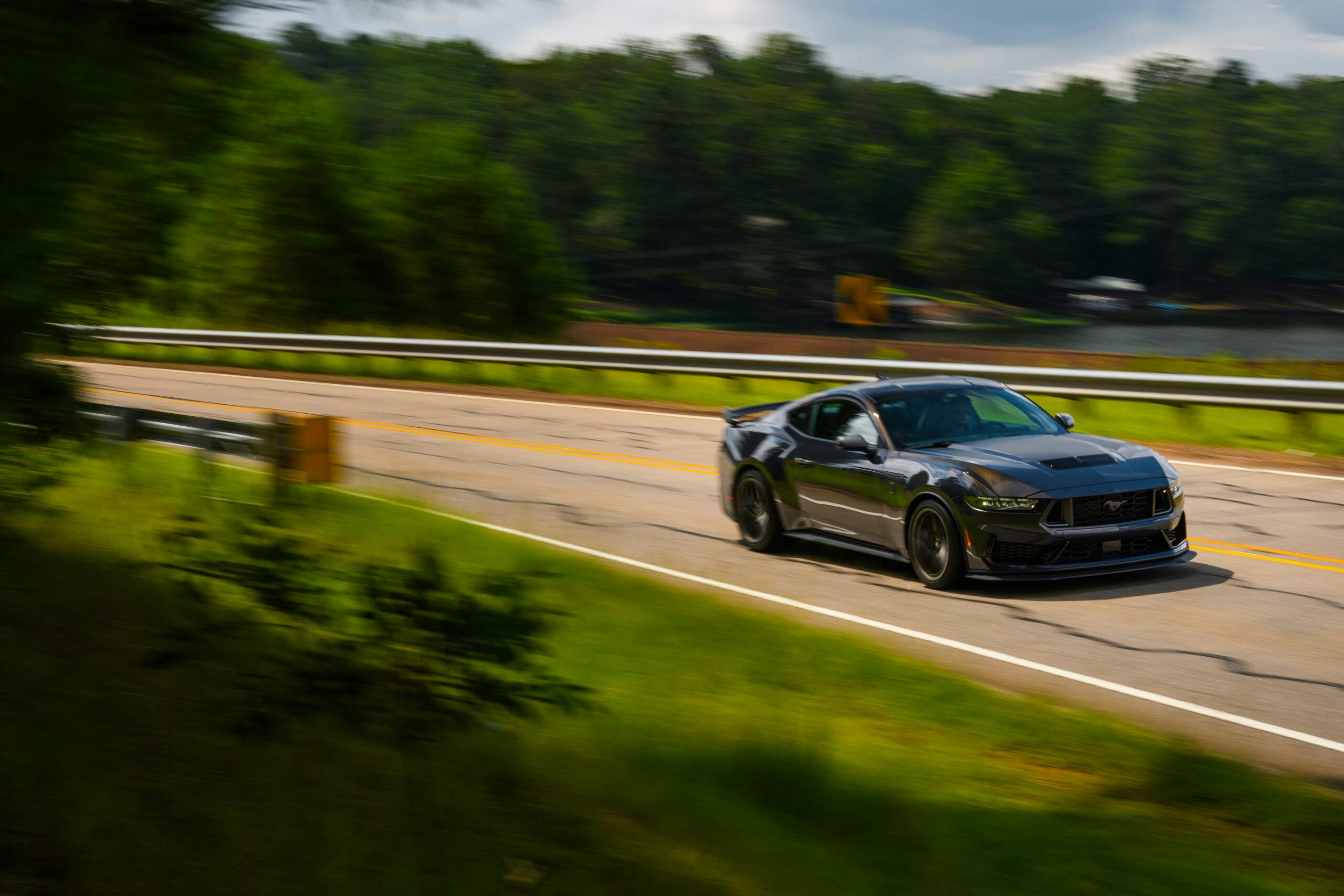
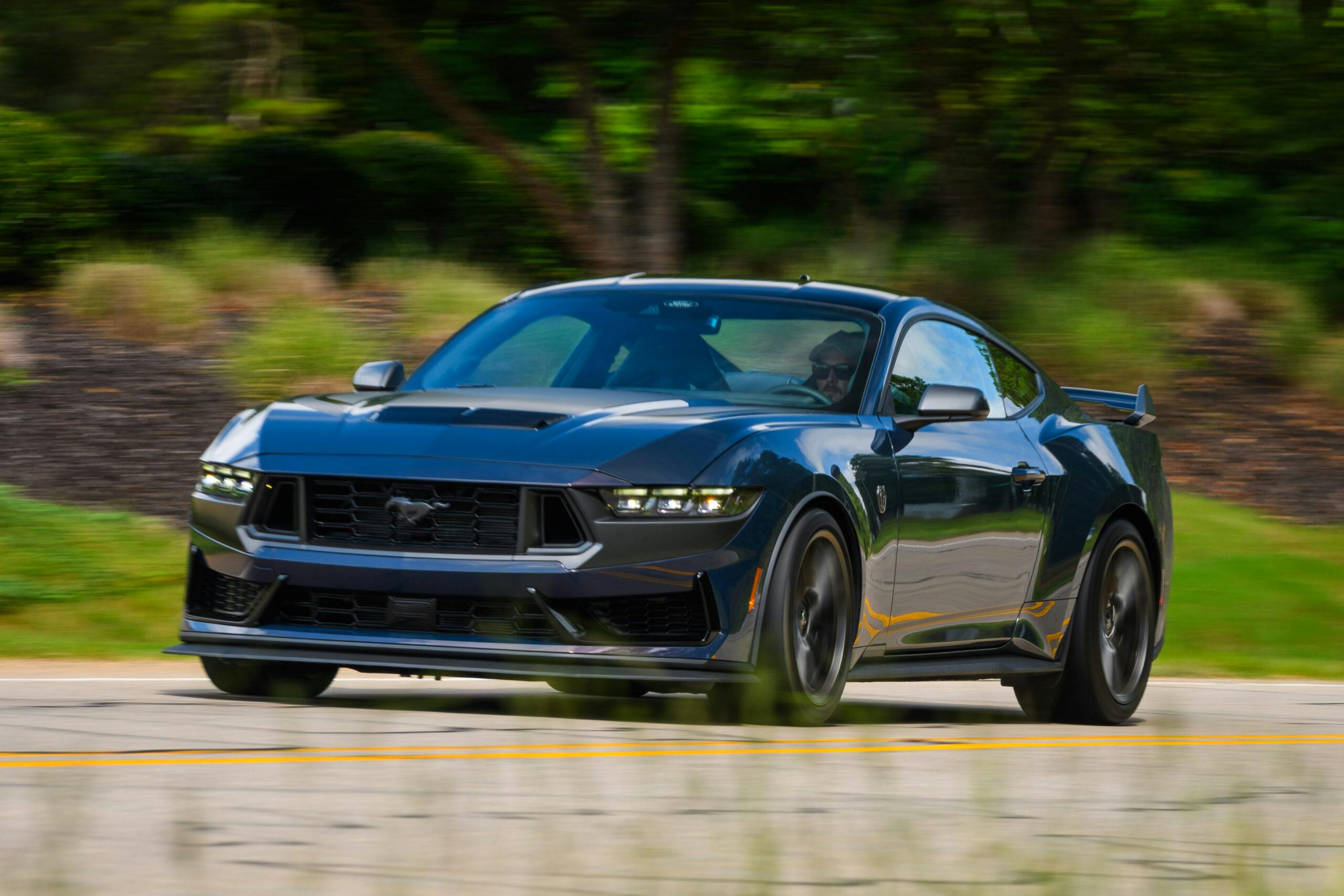
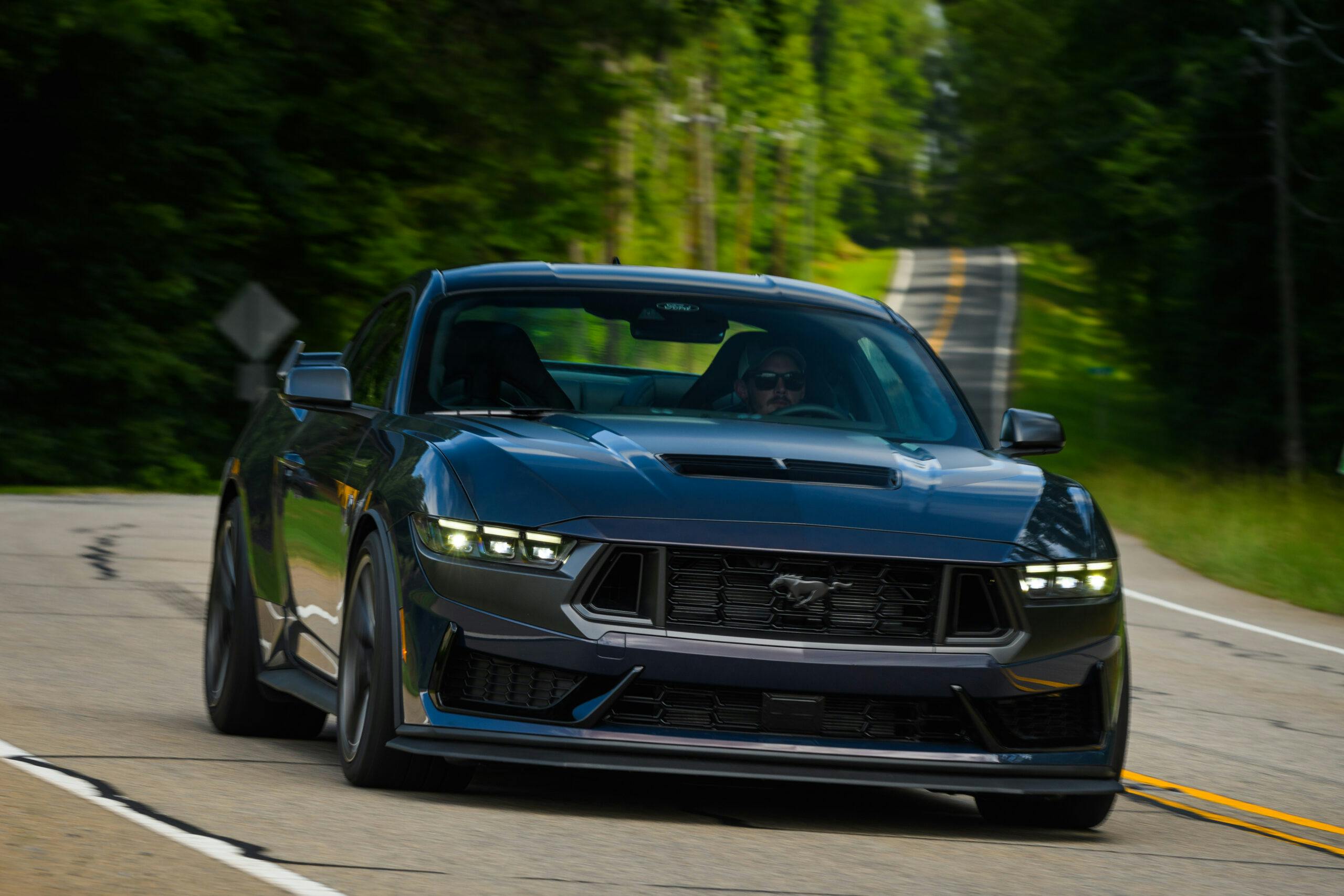


Absolutely hideous, regardless of the numbers. More Mustang, less Camaro please.
Up to $75k for the loaded boat but roughly $66k for the one you want with the handling package. Too much for a tarted up Mustang GT.
It looks way to much like a camero. Not sure who made these design changes but they need to be replaced.
2 words. Stick Shift!
Nice Camero…oh, wait…never mind.
The digital screens are a fad that need to go away like tuberculosis.
The amount of creases on the front and rear along with the blacked out surfaces make it look like Ford hired a teenager to design it. This car will not age well.
And then there is the price. $75K.
Good luck in finding new buyers.
My cousin is on a five month waiting list for one of these bad boys. So they are selling.
This car is amazing. A couple more ipads on the dash would complete the interior. Also include a digital windshield displaying what’s on the outside, may add so more horsepower too.
Ford destroyed the Mach 1 name when they called their electric granny car the Mustang MachE. Now they go to a sinister looking package that will appeal to twenty somethings just as student loan payments start up again. Great performane and good handling obfuscated by confusing, contrsdictory styling.
To Big, To Bulky, To Heavy, To many Electro-Tech-Gimmicks, Needs a Manual stick shift instead of a Drift Brake….. Just the put the new dual throttle body spec engine in a re-release of the previous production Mustang Shelby GT350R and save both Ford and Consumers money and call it PROGRESS….!
Too pricey. I’m a mustang lover, driving my 5th car now. Please, please keep us in mind!
I stopped liking Mustangs since, and including the 2010 model. They`ve gotten to big and to expensive. I first had a 1971 and then a 2014. Liked the 71 a lot more than the 14 even though the 14 was faster than the 302 in the 71. The 71 was more fun to drive. The automatic transmission in the 14 shifted sloppy but the Ford garage said that`s the way they are. I liked feeling the shifts. I gifted the 2014 to my son. I am more interested in a 69 Mach1 which in my opinion is the ultimate Mustang. Ford had it right and over the years went to big, to heavy and like the rest way to expensive. Buy an old one.